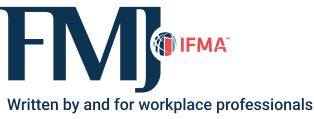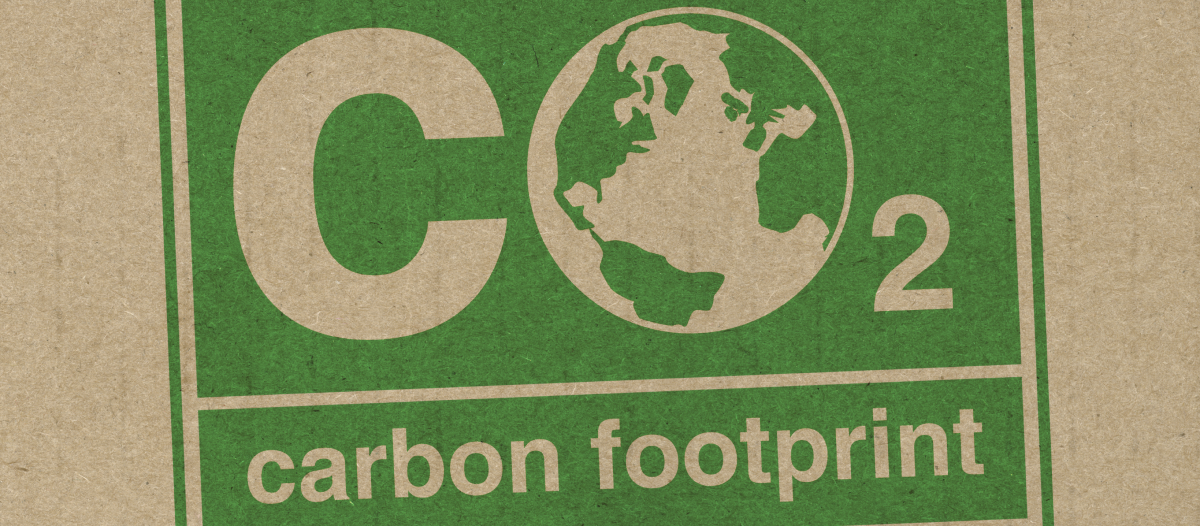Follow the Blueprint
Compliance for sustainability success

Every facility manager understands regulatory compliance as a business necessity. Staying ahead of new and continually updated regulations is key to maintaining compliance and avoiding potentially costly fines. However, compliance is also a valuable tool that can guide facilities toward greater sustainability and less waste? Maintaining compliance can generate benefits far beyond a facility manager’s initial focus.
Today, compliance is increasingly intertwined with environmental sustainability and the concept of being a good corporate citizen. Government regulations are often mandated to help reach local and national sustainability goals. In addition, some companies are implementing their own compliance mechanisms, with the goal of reaching internal sustainability targets and showcasing their leadership.
Legal compliance
 Legal compliance in San Francisco, California, USA, is driven by both goals and data. In 2003, the city was one of the first to set an ambitious goal of zero waste by 2020. While the city had managed to divert 75 percent of its waste from landfill by 2010, the rate of diversion slowed, and the diversion percentage has hovered around 80 percent for the last five years. However, an estimated 60 percent of the city’s waste going to landfill was actually recyclable or compostable. New goals were set calling for a 15 percent reduction in overall waste generation and a 50 percent reduction in landfill disposal by 2030.
Legal compliance in San Francisco, California, USA, is driven by both goals and data. In 2003, the city was one of the first to set an ambitious goal of zero waste by 2020. While the city had managed to divert 75 percent of its waste from landfill by 2010, the rate of diversion slowed, and the diversion percentage has hovered around 80 percent for the last five years. However, an estimated 60 percent of the city’s waste going to landfill was actually recyclable or compostable. New goals were set calling for a 15 percent reduction in overall waste generation and a 50 percent reduction in landfill disposal by 2030.
To meet the goals and achieve compliance with the city’s mandatory recycling and composting ordinance, the city’s single-franchise waste hauler set waste stream contamination thresholds of 5 percent with no glass for compost, 10 percent for recycling and 25 percent for trash. The city’s businesses had to maintain clean waste streams (e.g., no glass or trash in the compost stream, no organics in the recycling stream).
In February 2018, the largest solely office building in San Francisco triggered the imposition of a 50 percent surcharge by the hauler, in coordination with the city’s department of environment, for repeatedly being found with contaminated waste streams.
Working with the building’s property management company, a sustainable waste consultant recommended a sorting program and trained the building’s janitorial team to properly sort materials they found in all three (compost, recycling and trash) waste streams. Simultaneously, an intensive outreach and education effort was directed at the building’s tenants stressing centralized triple-stream waste collection stations to improve waste separation upstream, before the waste was picked up by the janitorial crew.
At the beginning of the sorting and outreach programs, the building was diverting 51 percent of its total waste. After two months, the surcharge was released with audits meeting or exceeding the regulatory thresholds. By May 2019, just a little over a year after the building began work to get into compliance, the building’s diversion rate had increased to 85 percent, dropping only slightly during the pandemic. Plus, the building’s waste hauling costs decreased US$10,000-12,000 per month due to increased diversion and less waste.
While the efforts were aimed initially at compliance for the building, the most important outcome was the increase in compost diverted from the landfill. The amount of properly sorted compost increased from 21.95 tons per month to 40.61 tons per month over 15 months, while the amount of trash declined from 14.29 tons per month to only 1.75 tons per month.
For this building, regulatory compliance catalyzed lasting changes in tenant waste separation performance upstream and janitorial sorting downstream.
By sorting waste and maintaining compliance, the building also avoided the next round of regulations. San Francisco city leaders had found that 489 large refuse generators were responsible for 20 percent of the city’s waste. New regulations that went into effect in July 2019 called for any site generating more than 40 cubic yards of waste per week (or operating a compactor) – including office buildings, hotels, restaurants, multi-unit housing and some city buildings – to be subject to audits every three years to ensure compliance with current recycling requirements.
In this case, the benefits of achieving compliance were greater than simply meeting legal requirements. Without the legal push for an audit, the building could have been complacent about its recycling and composting efforts, and it could have continued paying for the most expensive stream — trash — at an inflated quantity due to contaminated recycling and compost year after year.
By becoming compliant with local regulations, the building is not only saving money, but is now recycling more, diverting more compostable material and improving its sustainability performance. The most recent audit of this building’s recycling stream showed a remarkable, almost unattainable 0 percent contamination percentage.
Corporate compliance
What if a company has facilities spread out over a large geographical area running across numerous local districts with different regulations, or even across the world? Corporations with a wide global footprint face fragmented waste management requirements and diverse country, state and municipal compliance issues. Best practices are a partial solution to coping with different levels of external regulations. Setting internal goals and sustainable practices provides consistency across different production and manufacturing processes.
One multinational corporation decided to expand their sustainability efforts under an internal goal that would go well beyond meeting legal requirements for waste management in the areas in which they operate. This company’s corporate mandate was to close the loop on its operations by achieving at least 95 percent diversion from landfill and incineration – beyond the commonly understood definition of zero waste of at least 90 percent.
At one of the company’s European sites, a large amount of used paper towels ended up in the landfill, consistent with local health regulations. To close the loop on that stream of waste, the company found a unique solution through the supplier, who recycles the used paper towels using a technology not yet widely available. In this case, compliance with the corporation’s own internal mandate is helping the company seek out creative ways to reduce waste, even when not legally required to do so. The corporation is cataloging the best practice so it can push the supplier to provide the same service to the company’s operations around the world.
At another facility, located in a different country, a large amount of plastic – representing 40 percent of that operation’s overall waste stream – was being legally incinerated as waste-to-energy (WTE) and not being recycled. This was partly because the plastics used at this facility emerged from the manufacturing process combined or as composite materials, making them difficult to recycle. Because both WTE and landfilling are not acceptable under the company’s close-loop corporate mandate, the facility explored altering the manufacturing process to keep rejected or imperfect components to a minimum, and to keep plastic wastes separated so that they can be easily recycled instead of legally incinerated.
Compliance with this internal corporate policy framework is helping the multinational ensure it maximizes its sustainability targets in every location, no matter what the local rules are, and that all its facilities will be able to maintain a baseline that is measurable across its global operations.
But most importantly, this corporate mandate has showcased the company’s leadership in sustainability, which is a key factor in environmental, social and governance (ESG) ratings for investors assessing the world’s biggest businesses.
Compliance with national/global goals
Organics consistently comprise the largest portion of a facility’s trash stream, accounting for an average of 36 percent of what is wasted. This was the finding of the largest and most comprehensive waste characterization study to date focused on commercial office buildings. The study looked at data from waste audits conducted by Great Forest at more than 100 office buildings around the world, analyzing more than 170,000 pounds of waste.
With so much food waste generated by the commercial sector, it is no wonder food waste is recognized worldwide as a major problem. TARGET 12.3 of the UN’s Sustainable Development Goals calls for halving “per capita global food waste at the retail and consumer levels…” by 2030.
Regulations to address food waste are proliferating. Even if local regulations do not address food waste, making efforts to reduce food waste is still a smart move, considering the likelihood of food waste regulations coming.
In the U.S., businesses are encouraged to show their leadership on the issue by joining a group of corporations, recognized as Food Loss and Waste 2030 Champions, that have made a public commitment to reduce and report food loss and waste in their operations.
Complying with targets like these, while not mandatory, are reputational pluses. That may have been the impetus behind the decision of one fast casual restaurant chain to go the extra mile to find out how much of their food waste could be rescued.
The chain already had policies and procedures to minimize food waste, but they did not distinguish between surplus food that could be donated and spoiled or otherwise inedible food.
So, the chain selected three key store locations to conduct food waste audits to find out how much of their food waste could be diverted from an organics collection program to a food donation program. The waste audits found the company could rescue an average of 26.7 percent of its daily food waste, which was donatable as defined by a food rescue organization.
The audit provided the data the company needed to move forward with a regional donation program. The company’s efforts could return thousands of pounds of food to tables every day, and fill a very pressing need in struggling communities.
While not driven by legal compliance, this desire to comply with the national and global push to reduce food waste will make the company more sustainable, and in the process, earn invaluable goodwill in the communities they serve. This will not only sustain the company, but also help it grow and flourish.

James Bernard is Great Forest’s West Coast representative undertaking waste stream diversion assessments, LEED-level audits, providing recycling education, donation and reuse assistance, and problem-solving services to major hotel and office clients in Northern California as well as waste management consolidation and compaction assessments and equipment implementation for technology campuses. Recently, Bernard has worked internationally on circular materials management site assessments for manufacturing clients. He is TRUE Zero Waste Advisor and brings a broad knowledge of natural resources management to Great Forest through deep experience in land conservation, environmental indicators research and development, land and natural resources planning, water resources planning, and sustainable economic development.

Read more on Sustainability and Standards or related topics Standards , Sustainable Facility and Regulations
Explore All FMJ Topics









